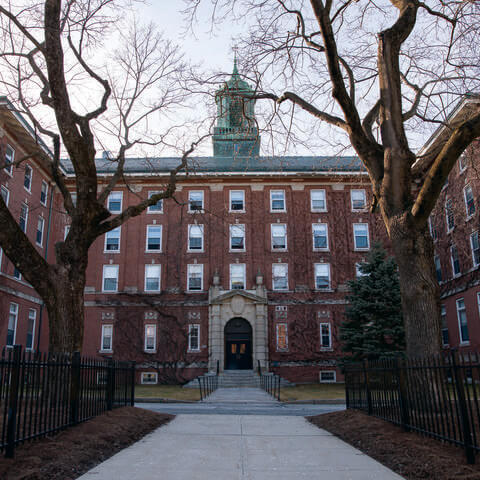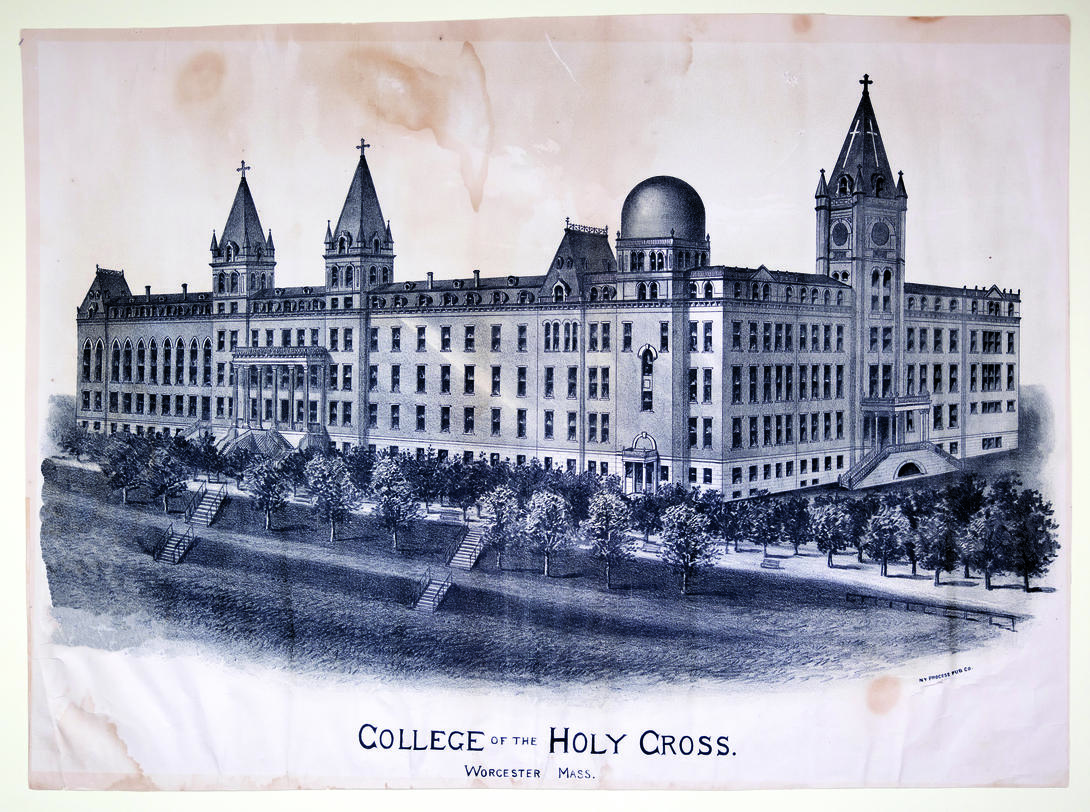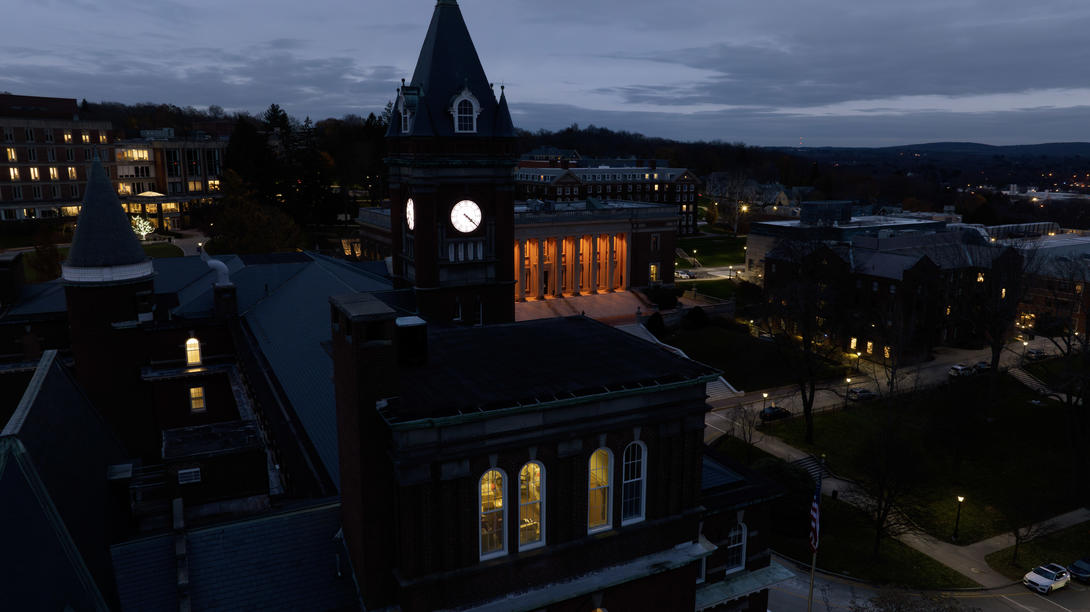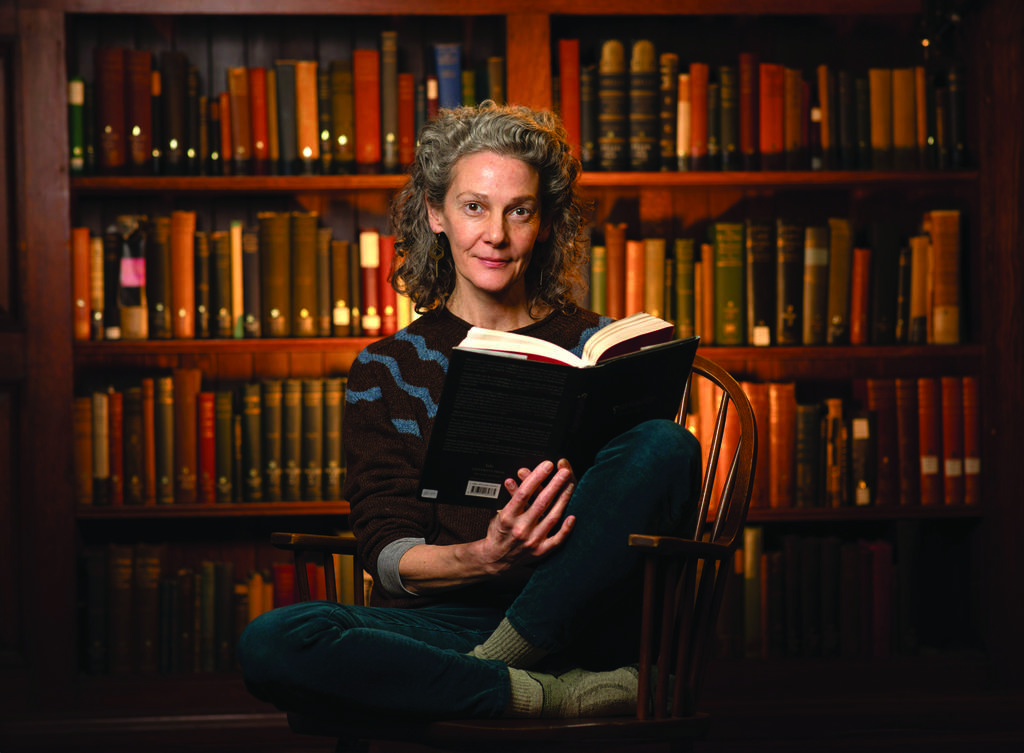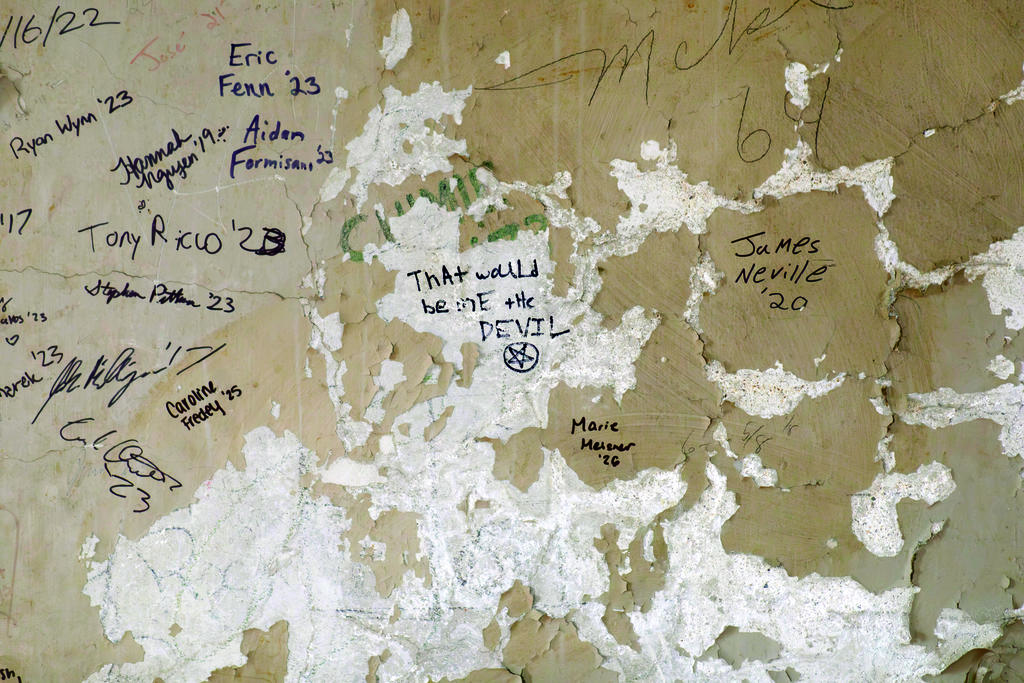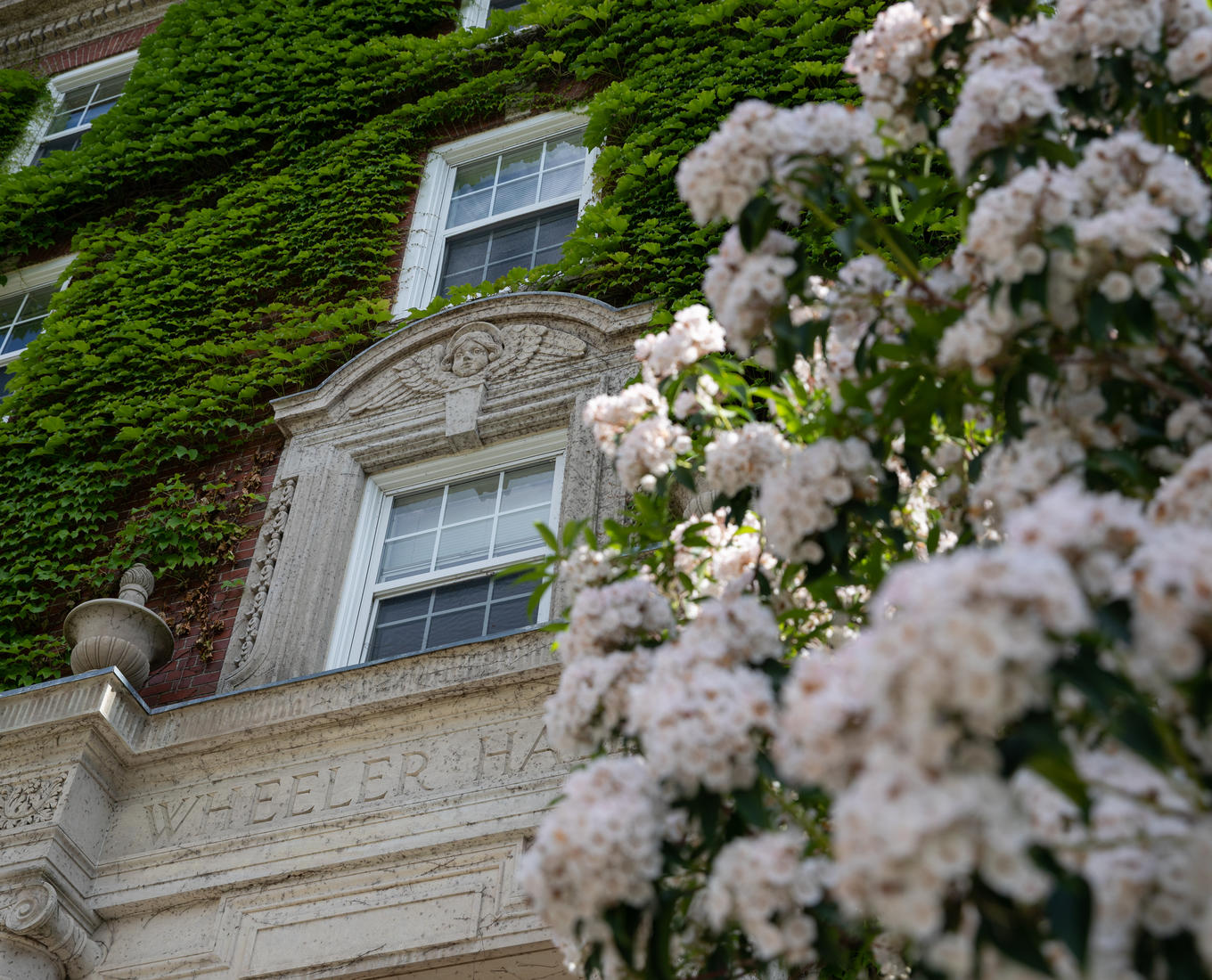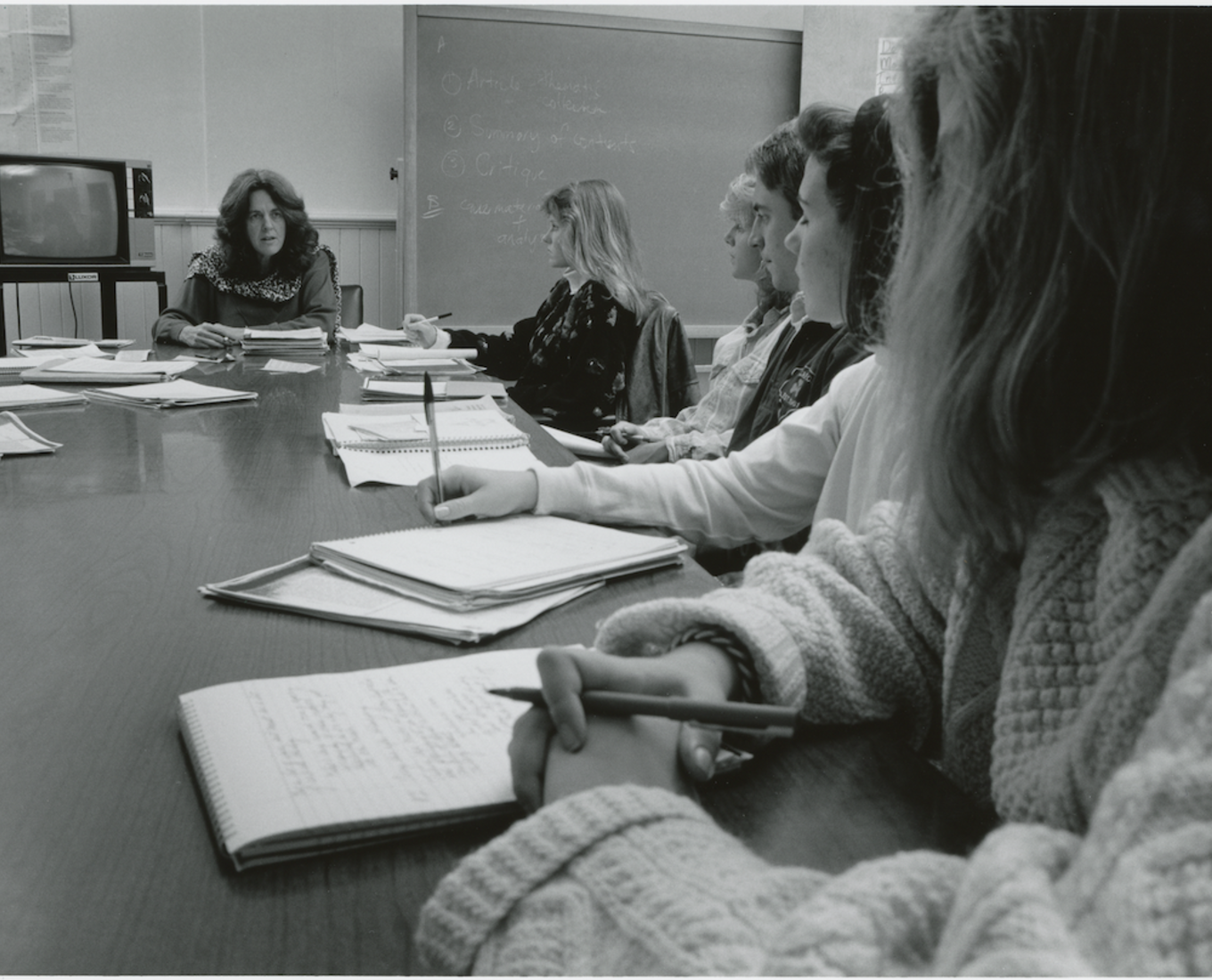The one inviolable rule of a horror movie? When afraid, run.
Run from the red-balloon-bearing-razor-toothed clown, the cocaine bear and the Blair Witch. Run from Freddy, Jason, Michael and Chucky. Take a lesson from nature. Does the rabbit stop to question whether the werewolf might want friendship and not dinner? No.
There is only one response: Run.
Now, there are places not to run: alleys and attics, basements, boarded-up houses, abandoned insane asylums, abandoned anything. But chief among those — a misstep so knuckleheaded it incenses and invites judgements of “too stupid to live” — would be a room with a reputation as a place that hosted exorcisms.
And yet, if you’ve ever waited until dark to ascend the staircase at the corner of Fenwick and O’Kane halls, the steps nicknamed “The Stairs to Nowhere,” the one that ends at a locked door, then your intention is to enter a room rumored to have been used for exorcism.
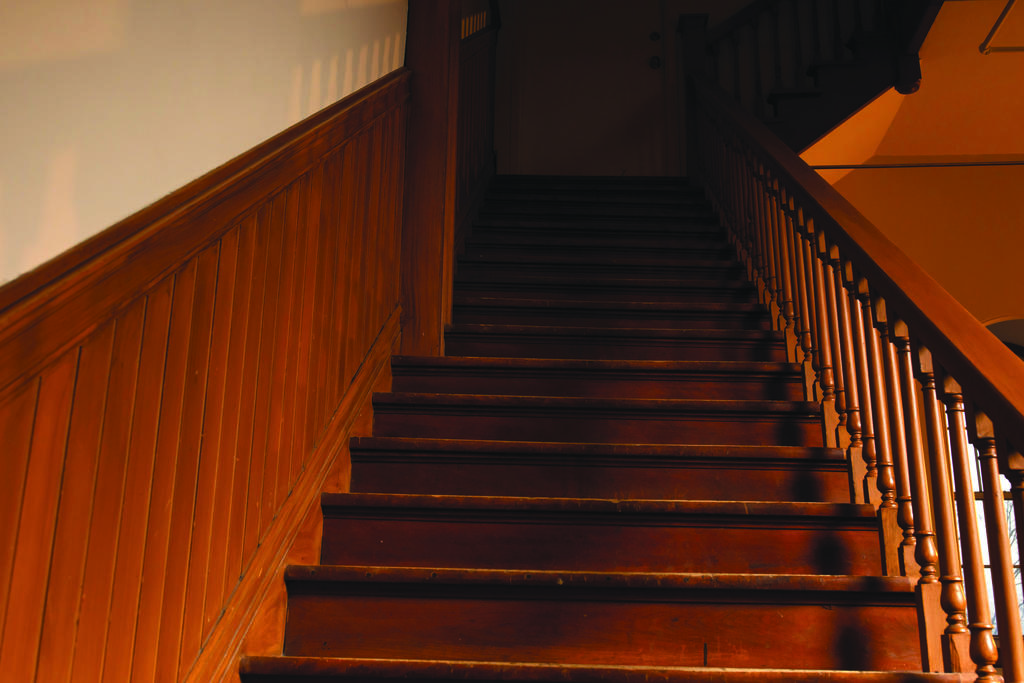
If Catholic and a believer in the Rite of Exorcism, why take the risk? And if not, why go there — literally and figuratively? Is it thrill-seeking? Certainly. Is it about bragging rights? Definitely. But could seeking out the scary experience offer bigger benefits? Could it be that our attraction to haunted house tours, thrill rides or jumping out of a plane at 10,000 feet is about more than a heavy-hitting adrenaline rush?
Or does fear propel us for reasons far more complicated and mysterious? What if it eases a painful adolescence? Enables us to think about death? Affirms faith? What if it inspires wonder? Or strengthens our sense of connection and belonging? What if it might even foster a sense of pride? Could it be a conduit for which fear is payment for extraordinary experience?
That would be quite a room.
What fear holds for us is complicated. So why are we attracted to it?
“Middle school is a horror movie for everyone”
In December 2023, director William Friedkin’s horror classic “The Exorcist” turned 50 and, two months earlier, Hollywood released a sequel, “The Exorcist: Believer,” starring Ann Dowd ’78. The movie returns to familiar territory: Two middle-school girls are demonically possessed and the adults in their lives must do battle with the devil for their souls. True to its roots, this new chapter of “The Exorcist” franchise doesn’t end well for all involved. In the aftermath of the exorcism, Dowd’s character, Paula, a nurse who once aspired to be a Catholic nun, lays out the eternal battle: “We’re born in[to] this world with hope and dreams and a desire to be happy. The devil has one wish: to make us lose faith, to kill it in us. And the devil never gives up.”
One version of Holy Cross’ “Exorcism Room” legend — there are several variations, as is typical of the oral tradition — follows a similar trajectory: Two Jesuits take a young woman possessed by a demon into a room above the fourth floor of O’Kane Hall for the purpose of performing an exorcism. One priest is thrown through a window and falls to his death. The other priest and the young woman are never seen again.
Accurately dating an urban legend is near impossible, notes Scott Malia, associate professor of theatre, but he theorizes that “the story has to be 50 years old or less because before that we weren’t a coeducational institution.”
“Possession stories tap into this idea of what we call ‘agency panic,’” he says. “One of the many things that horror does is put people in situations where the ordered way of being and living that they think they have is thrown out the window.”
Perhaps, similar to the sudden presence of women in a previously all-male environment, as was the case for Holy Cross starting in 1972?
There’s a name for the linking of unrelated things like co-education to ritual exorcism, folklore and Hollywood movies — it’s called apophenia — but before calling that ridiculous, consider the possibility of connection, says Malia, who teaches “The Exorcist” in his course Horror Films, Sex and Gender.
“It might be that this story started circulating as a response, as in, ‘You’ve let a woman into our midst’ and women are this sort of uncontrollable force — especially adolescent women,” he says. “‘The Exorcist’ is about a girl going through puberty and she becomes a different person. And her mother can’t control her. Metaphorically, there’s so much about possession that is about our fear of women, their sexuality and, certainly with young women, there is a desire to control them.”
Put another way, desire prompts fear, which prompts the desire to control. It’s a common, if not ubiquitous, theme in the realm of horror, whose overarching premise is that only through confrontation is order restored. And it’s an idea kids respond well to for its promise of growth and transformation, Malia says.
He started watching horror movies and reading Stephen King when he was an adolescent. Such stories can be a balm to the child who feels rejected, he says: “Why do we put ourselves through experiences like these? The stories are often about the freaks, the outcast kids, the kids who aren’t popular, who aren’t necessarily doing well and how they kind of band together. That shows up in a lot of horror stories. Middle school is a horror movie for everyone. At that awkward age in life where you don’t want to stand out, where you’re not really sure who or what you are and everything is so awkward and painful, such stories speak to you. There’s a lot of really interesting ways in which horror, including ‘The Exorcist,’ deals with adolescence.”
Part of coming of age is “facing the darkness, whatever that may be,” he says. “Even if it’s some made-up, supernatural thing. Part of your entry into adulthood is realizing not everything is rosy and sunny.”
“How many New Yorker cartoons have you seen that have the Grim Reaper at the door saying, ‘Sorry, wrong address!’”
Religious Studies Professor Emerita Joanne Pierce was a first-year student at Georgetown University when Friedkin filmed “The Exorcist” on campus in November and December of 1972. Pierce is an expert in rituals. During her 30-year tenure at Holy Cross, she taught courses on the history of Christianity, sacramental theology, symbol and ritual, ritual studies, concepts of death and the afterlife, and the honors seminar Purity and Filth, among others.
A point to keep in mind about the particular panic caused by “The Exorcist” and stories like it (“The Exorcist,” “Rosemary’s Baby” and “The Omen” were all released between 1967 and 1976) was that the idea of demonic possession, despite appearing in other faith traditions, was rather novel to a non-Catholic public.

“Every country in Europe has its own stories about demons, the dead, leprechauns, trolls or the changeling — those outside forces that are either clearly evil or mischievous — that’s part of our fascination with wanting to understand and control death,” Pierce says. “How many New Yorker cartoons have you seen that have the Grim Reaper at the door saying, ‘Sorry, wrong address!’ that kind of thing? But it’s also based on Christianity’s ancient and medieval belief in a very explicitly defined heaven and hell, and, then later, purgatory and limbo: this whole focus on the afterlife and the world of intelligences that are not corporeal.”
And these beliefs persist. Pope Francis has repeatedly referenced the devil’s influence in the world and, on one occasion, his actions caused a frenzy of speculation that he may have performed an exorcism. In 2013, multiple media outlets released footage of the pope laying his hands on and praying over a wheelchair-bound man who’d attended Mass in St. Peter’s Square. In the video, the man gapes, gasps several times and then slumps in his wheelchair. TV2000, the Italian bishops’ conference television station, reported at the time that the pope had performed an exorcism, according to the May 21, 2013, New York Times article “Exorcist Says Pope Helped Liberate Man.” The Vatican released a statement saying Pope Francis “didn’t intend to perform any exorcism . . . he simply intended to pray for someone who was suffering,” according to USA Today. The Church continues to train exorcists, something it has done since Jesus charged his apostles with the ability (Luke 9:1, Matthew 10:1, Mark 3:15). Jesus also performed numerous exorcisms throughout the New Testament.
Pierce, like the Jesuits consulted in the writing of this article, is quick to note that exorcism is employed by the Church only in extreme cases after a petitioner has been examined by medical doctors and psychological and physiological diseases have been ruled out. The rite may only be performed by a trained priest appointed by the local bishop. The priest, through a process of prayer and discernment, may determine that the person’s affliction is demonic in origin. Proof of possession may manifest as abilities beyond what the afflicted ordinarily possesses, such as great strength or intelligence or the ability to speak a foreign or archaic language. Some claiming to be possessed report perpetual pain and suffering, though symptoms aren’t as dramatic as those displayed in the queasiest moments of “The Exorcist.”
What is behind this fascination with the devil and danger, whether it be that of a person seeking exorcism or a legend-tripper breaking into the room where it allegedly happened? A healthy fear of the unknown has its value, as any anthropologist, philosopher or insurance agent will tell you. So, does that mean an interest in exorcism is unhealthy?
Maybe, maybe not, the experts say.
“I think it’s a symptom of a deeper kind of discomfort in the wider culture,” Pierce says. “I think we’re frustrated with things we don’t think we can control and exorcism is a way of controlling evil, let’s say, or darkness. When I think about ‘unhealthy,’ I think about discontent, and not just the need for control, but also, in this contemporary period, an increasing dissatisfaction with science and technology and — we saw this during COVID — a real suspicion about medicine and medical techniques.”
Mathew Schmalz, Pierce’s friend and fellow professor of religious studies, also disagrees with the characterization of an interest in exorcism as “unhealthy”: “I think it represents one way in which we, as human beings, try to make sense of evil, try to control or confront it. And, also, it’s one way of recognizing that the boundary between this world and the next is porous. And I think Catholics, and people in the wider society, find that idea compelling, you know, that our reality is not the only reality that exists — and that realities interpenetrate each other.”
Schmalz speaks from particularly pertinent personal experience. He’s attended an exorcism.
“The boundary between the natural and the supernatural, at least in traditional Catholicism, is not that stark”
In the mid-1990s, Schmalz was a Ph.D. student researching charismatic Catholicism in North India. Some charismatic Catholic lay healers claim prodigious powers, such as the gift of prophecy and the ability to exorcize the diabolically possessed. One thought Schmalz had such abilities. “One of my chief informants, a Catholic charismatic healer, wanted to persuade me that I had the gift of healing and prophecy,” he says.
The healer decided to test his theory without letting Schmalz know first. The pair were in a Catholic ashram, a place where people sought Catholic charismatic counseling from men and women healers. The healers would discern whether the person was possessed. If so, the afflicted would be taken to an exorcism room, a room that had been blessed, in which the demon would be confronted and expelled by the healer. “It was just an ordinary room with a picture of Jesus and two chairs, but there was this sense that there was a kind of spiritual force field around it that would enable a confrontation."
Typically, two charismatic healers would sprinkle holy water over the supplicant and prayers would be said upon entering the room. Then the ritual would begin. One day, while Schmalz was filming the healer, the healer turned and said, “OK. You can finish,” then left the room.
“And the woman was barking like a dog, rolling around and using profanity, and I was, like, What do I do here? I felt kind of constrained,” he recalls. “So, I did lay hands on her and she stopped barking and rolling around, and thanked me and left the room.”
Schmalz smiles. He doesn’t think he healed the woman nor does he believe she was possessed. His experience is not unique to those who do ethnography, the study of cultural phenomena from the position of the subject, the person or persons, studied. As a Catholic and a believer in the Rite of Exorcism, Schmalz believes only a trained priest is capable of driving out demons. The Catholic Church doesn’t sanction Catholic charismatic exorcism by lay healers.
“But one thing I thought was very compelling was the idea of looking at the world in terms of the world being alive with all these spiritual forces,” Schmalz says. “One thing about Catholicism that sometimes gets lost in the modern era is that the boundary between the natural and the supernatural, at least in traditional Catholicism, is not that stark.”
In a 2018 interview with “Exorcist” director Friedkin for the documentary “The Devil and Father Amorth,” William Peter Blatty, author of the novel “The Exorcist,” said he originally wanted to write a nonfiction book about exorcism based on a 1949 case involving a 14-year-old boy. The novelist was introduced to the Rite of Exorcism in a theology course taught by a Jesuit that Blatty took while an undergraduate at Georgetown. Blatty later read about the 1949 case in The Washington Post and contacted the priest who performed the exorcism.
“And I was very excited about it,” Blatty told Friedkin. “And I thought, Wouldn’t it be absolutely marvelous if one could write a nonfiction account of this, provided it was authentically something paranormal and inexplicable? What a tremendous reaffirmation of faith that would be.”
“It was a really nice room, high ceilings and the best bathroom on campus”
An author who’d written extensively on the devil once warned Friedkin against delving too much into demonic possession. Many raised Catholic will recognize the warning as a caution against “letting the devil in.” It may come as a surprise (and a relief) to some to know that every baptized Roman Catholic has been the subject of an exorcism, as the sacrament of baptism contains a short prayer of exorcism.
